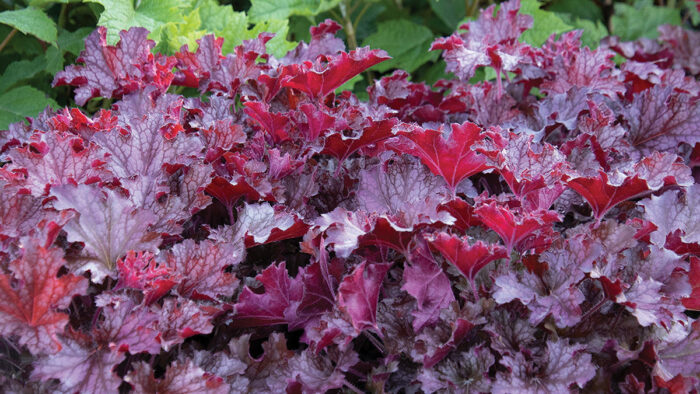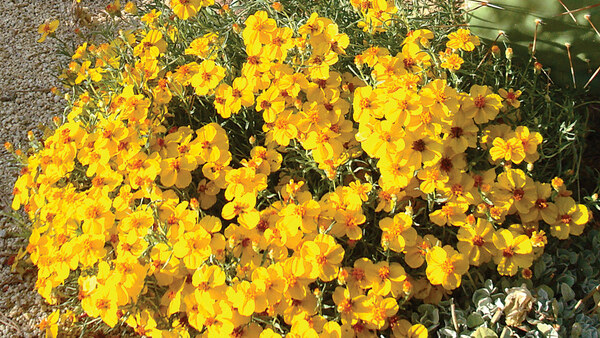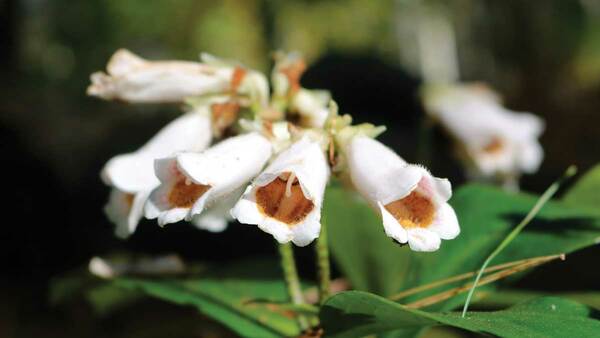
In Andy Brand’s article Unusual Fall Perennials, he discusses some out-of-the-box plant picks for this spectacular time in the garden:
“As we reluctantly accept the inevitable and begin preparing our gardens for winter, we can ease the transition by planting selections that provide color and excitement at this time of year. While many gardeners have traditionally turned to mums (Chrysanthemum spp. and cvs., Zones 5–9), goldenrods (Solidago spp. and cvs., Zones 3–9), and sedums (Hylotelephium spp. and cvs., Zones 3–9) to extend the gardening season, many also long for something different.”
Below, you’ll find fantastic perennials that are excellent, but have remained uncommon in fall gardens in the Mountain West. Looking for even more unexpected fall standouts? Make sure to check out Andy’s article.
1. ‘Sweet Sandia’ Coneflower

Name: Echinacea ‘Sweet Sandia’
Zones: 4–9
Size: 2 feet tall and 11/2 feet wide
Conditions: Full sun; average to dry, well-drained soil
Native range: Hybrid
The stunning blooms of this coneflower have lime green– tipped petals that melt into pink bases with red central disks. These blooms just might remind you of a slice of watermelon. ‘Sweet Sandia’ has compact, uniform growth, with flowers that stand tall from midsummer into fall, attracting hummingbirds and other pollinators. This coneflower has a profusion of blossoming stems that will provide you with cut flowers for months. It establishes quickly and emerges rapidly in spring. ‘Sweet Sandia’ tolerates poor and gritty soils and is deer resistant.
2. ‘Ruby Tuesday’ Heuchera

Name: Heuchera ‘Ruby Tuesday’
Zones: 4–9
Size: 16 inches tall and 14 inches wide
Conditions: Full sun to partial shade; average to dry, well-drained soil
Native range: Hybrid
You just can’t beat the newer heucheras when looking for colorful foliage. The leaves of ‘Ruby Tuesday’ are a deep ruby color, maturing to merlot with a silvery cast in fall. They are very ruffled and fluted and grow in a mounded, dense habit. Best of all, ‘Ruby Tuesday’ is on the larger side for a heuchera. Plant it where you want maximum contrast in texture and color. Tiny, starlike, white to pale peach flowers appear in late spring. Once established, this cultivar is drought tolerant; be sure not to overwater, as it is susceptible to root rot.
3. ‘Stand By Me’ Bush Clematis

Name: Clematis ‘Stand By Me’
Zones: 3–7
Size: 3 feet tall and 2 to 3 feet wide
Conditions: Full sun to partial shade; average, well-drained soil
Native range: Hybrid
Attracting bees and butterflies aplenty, this lovely bush clematis’s lavender, bell-shaped flowers first appear in summer, with a large second flush occurring in autumn. This hybrid is a cross of the North American native Fremont’s leather-flower (C. fremontii, Zones 4–7) and the European solitary virgin’s bower (C. integrifolia, Zones 4–9). It’s deer and rabbit resistant and dies back at the end of the season. Cut old stems to about 4 inches from the ground in late winter or early spring, and apply a fresh layer of mulch. While not a climber, ‘Stand By Me’ still does best with some support.
4. ‘Polished Brass’ Joe Pye Weed

Name: Eupatorium ‘Polished Brass’
Zones: 3–8
Size: 4 feet tall and wide
Conditions: Full sun to partial shade; average to moist soil
Native range: Hybrid
This is a vigorous, fast-growing nativar that attracts birds, bees, and butterflies, especially monarchs. It’s also deer and rabbit resistant. ‘Polished Brass’ Joe Pye weed’s parents are native late Joe Pye weed (E. serotinum, Zones 4–9) and nativar ‘Milk and Cookies’ American Joe Pye weed (E. perfoliatum ‘Milk and Cookies’, Zones 3–8). A large, upright plant that doesn’t spread, ‘Polished Brass’ has glossy foliage with a bronze-red tinge. Its soft white flowers cover the foliage completely in late summer through fall. This hybrid is the perfect choice for a pollinator garden, and it is tolerant of many different soil types.
Cheryl Moore-Gough is a retired Montana extension horticulture specialist and a coauthor of The Complete

















Comments
Log in or create an account to post a comment.
Sign up Log in